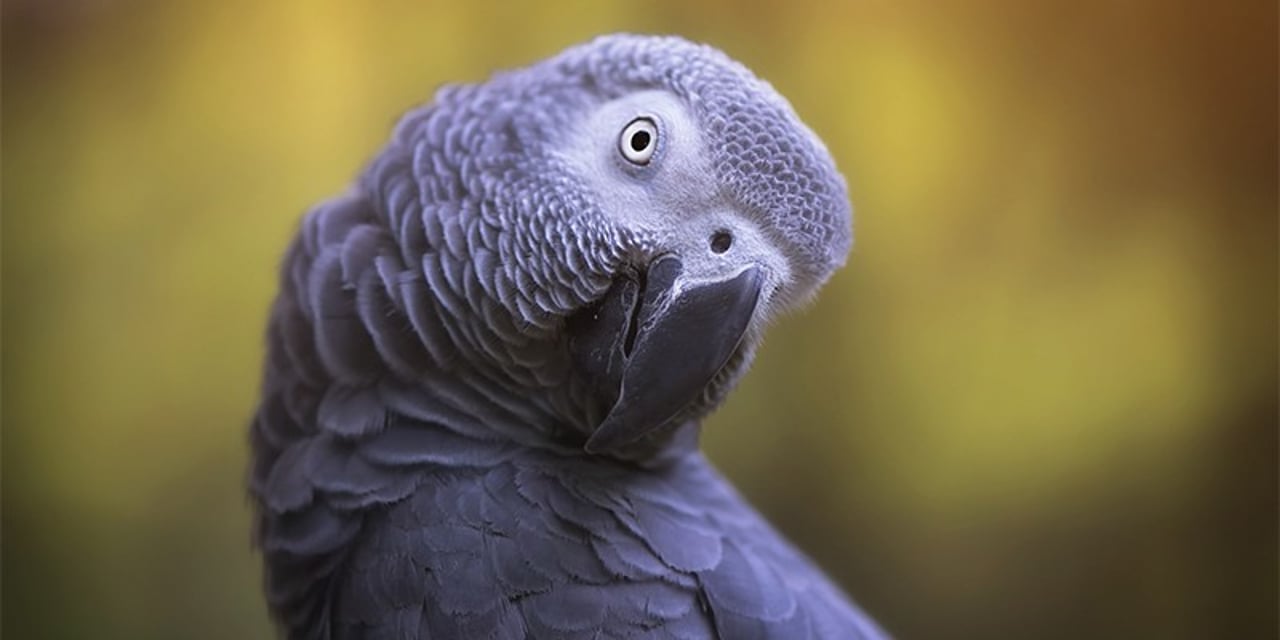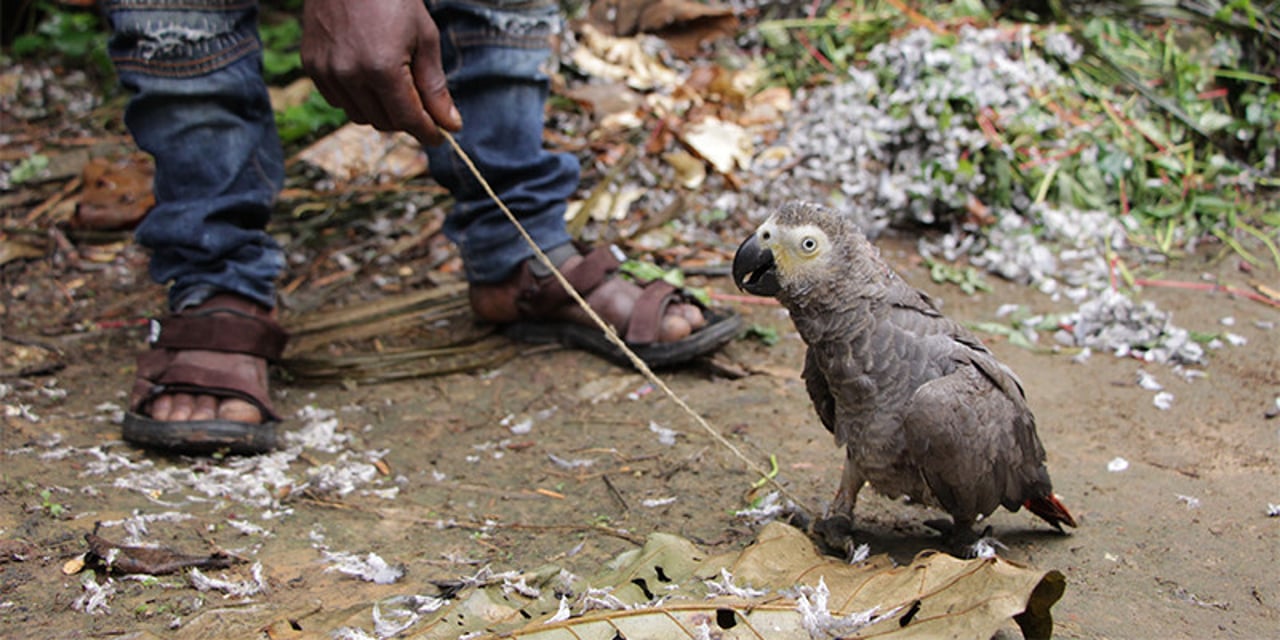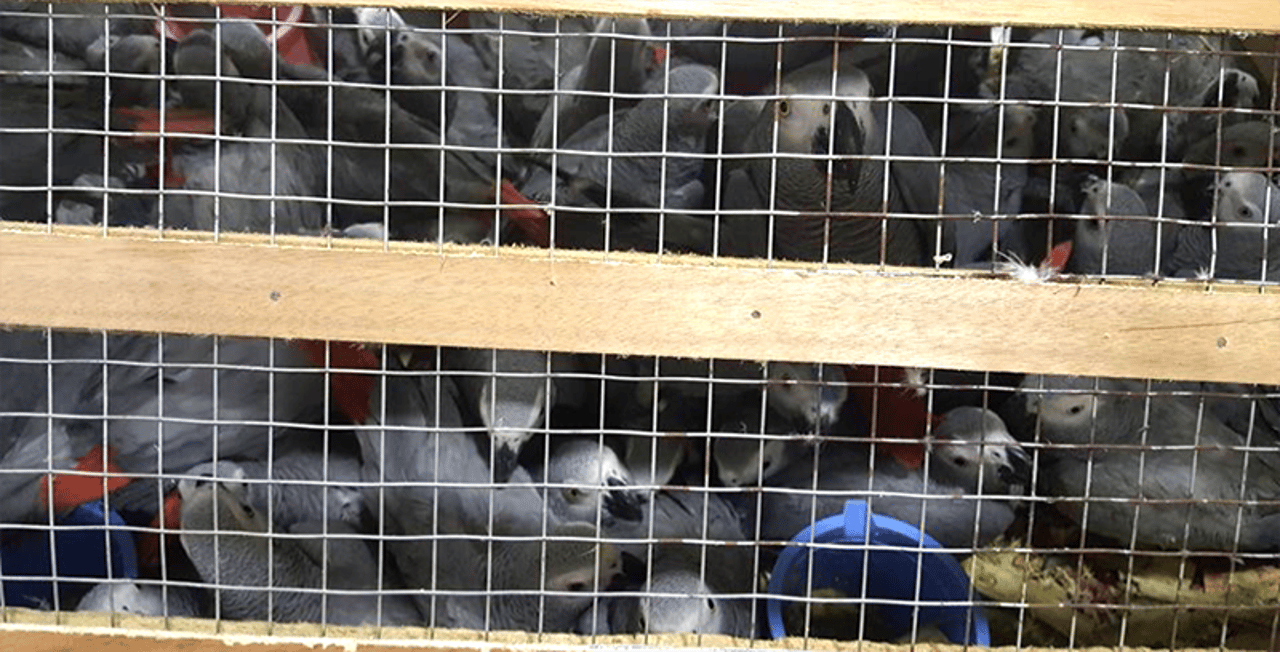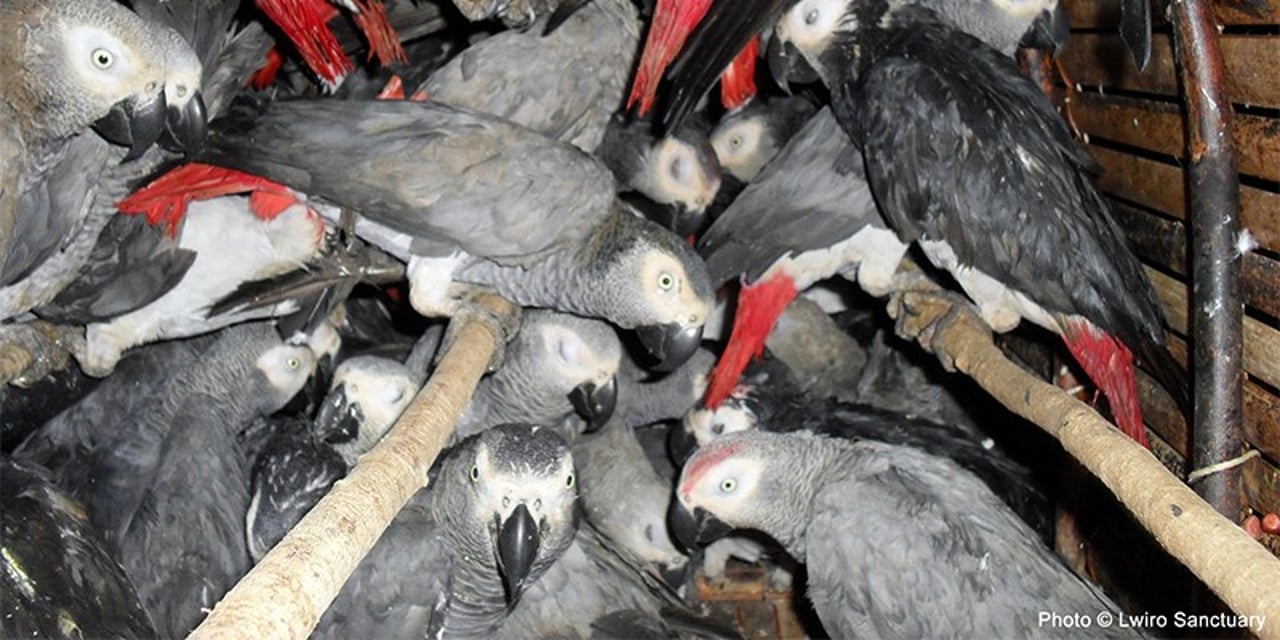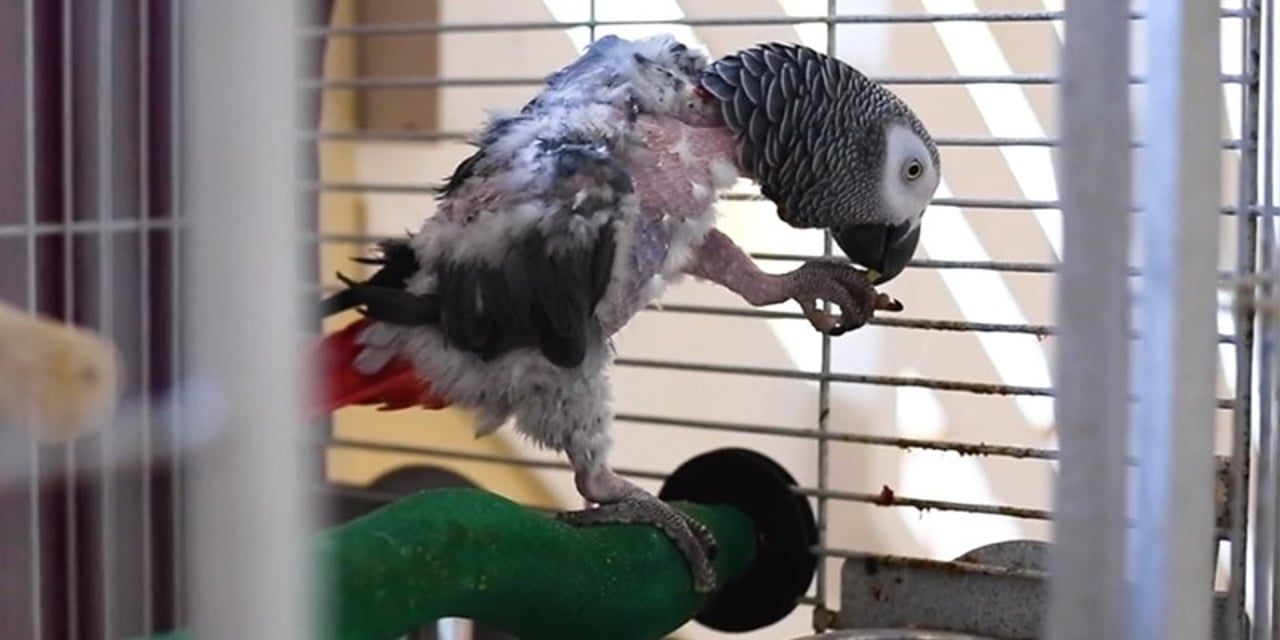
African grey parrots are amongst the most popular wild birds kept as pets, however, their journey to become pets is one of unimaginable suffering.
Exotic pet trade
Up to 21% of the wild population of African grey parrots is poached every year to supply the global illegal wildlife trade. Read on to follow the journey of an average African grey, from their natural life in the wild, through poaching and trading, only to end up in captivity...
African grey parrots' life in the wild
A wild parrot wakes up high up in a tree in the lush lowland forests of Cameroon. Her lifelong mate begins to groom her feathers in a display that reinforces their bond of trust. In both their tree and those that are nearby, African grey parrots are stirring in their large social group.
Taking to the wing, the parrots circle swooping and calling whilst more and more join them to set off for a day of foraging. Together the birds will fly distances of up to 6-10 miles! In the wet season they will keep to the tree tops to collect fruits, nuts, seeds and berries and in the dry season they will land in forest clearings to seek out food. Unfortunately, poachers have built traps for both situations.
The moment of capture
In the dry season, large nets are placed on the ground with lure birds tied to them to get the attention of the parrots flying high above.
In the wet season a lure bird has been tied to a broom handle and placed among branches at the top of the tree that are covered in glue. He is hit repeatedly by the poacher causing him to call out to get the attention of the parrots flying above. The wild parrot hears the cries from the lure bird and flies down to explore.
Landing on a nearby branch the wild parrot becomes stuck in the glue-like substance, she tries to fly away but her feet are stuck. She squawks, struggles, fights to get free but it doesn’t work. A noose is looped over her head and she is yanked hard by the neck, which tears her feet from the glue causing searing pain and she tumbles down through the leaves, her body lashed by the branches to land on the ground.
Before she is able to escape large hands grab hold of her and squeeze, her cries pierce the forest as she struggles to escape but it’s of no use. The poacher uses a machete to roughly chop off her flight feathers meaning she will not fly again for a long time. Immobile, in pain and fear she is thrown into a small box. The lid closes and everything goes dark.
The cruellest journey
The wild parrot is trapped, helpless and distressed in a small wooden box. The stubs where her flight feathers used to be are bleeding. She is bumped and thrown from side to side as the poacher treks back through the forest. This is the beginning of her long, frightening and hazardous journey towards becoming a pet thousands of miles away from her forest, nest, mate and community.
The bumping and banging of the box stops temporarily but is then replaced with the deafening sound of a motorcycle engine roaring. When the bike screeches off, she is flung around her box once again. She flaps and flails, calling out but she is drowned by the engine and starts to grow weaker as the journey continues.
Eventually, the terrifying noise stops and the wild parrot is taken from the back of the motorcycle and carried into the farm that the poachers and exporters use as a holding centre. She is roughly grabbed and thrown from her box into a small crate 40cm by 60cm which is crammed with up to 60 other parrots squawking and flapping trying to escape.
The crate smells foul, and its floor is thickly covered with bird faeces. A farmer at the holding centre throws a small handful of cheap bird seed into the crate. The wild parrot’s energy is waning and she is hungry. She scrambles to retrieve some food from the squalid floor. The other birds do the same and a desperate feeding frenzy ensues.
The little seed that she manages to eat is very different to the food she used to forage in the wild and it will lead to digestive problems and calcium deficiency over the coming days, if she is able to survive the upcoming plane journey.
The dirty business of wildlife trade
After being shipped by plane to the Middle East, the wild parrot is weak and distressed. It has been a long journey rammed into a that small hot crate. The plastic windows of the crate she travelled in are tinted green so that officials looking in would believe the parrots inside are green, thus not protected by wildlife trade laws.
Many of the parrots died in the cage on the journey. Some from exhaustion and poor diet, others suffocated and many had diseases that caught hold in the poor conditions and rapidly spread. Their bodies were left in the cage for the days the journey took, spreading further disease and infection. She was one of the few that survived though barely.
Now at the market there are new dangers for her. The climate here is much drier than the wild parrot is used to making her extremely hot and thirsty with no way to cool herself down or reach fresh water.
Every day hundreds of people push past, calling, shouting, poking at her cage, pushing their faces up close repeating noises and sounds again and again. She is stressed, frightened but unable to protect herself or escape to safety.
The journey ends, but not the suffering
After weeks trapped in the noise and crowds of the market the wild parrot is finally sold. Her life is not her own. Ripped from the free world of the tree tops she has been passed from poacher, to farmer to transporter to trader to owner. She has been traumatised, terrified, abused and starved. The cages change shape but the horror does not. Only in this newest version of prison there is a kindness, but it doesn’t make up for the loss of her home.
Parrot mix seeds
Her new owner offers her a generic ‘parrot mix’, food which is an unhealthy and imbalanced diet for an African grey parrot and a far cry from the varied diet she enjoyed in the wild. Her cage is 2 metres by 1 metre. She can stretch her wings but she cannot fly. She can climb up the bars and swing from a perch but that is it. She is alone and trapped.
The wild parrot is a social creature used to living in a flock. Instead of the calls of other birds, the sounds of their feathers and flapping of wings all she can hear is the whirring of a fan and the ticking of a clock. Her species are highly intelligent, needing stimulation and enrichment but most of all community. Without it, alone in cage in a quiet house with no interaction for most of the day she becomes frustrated and bored.
She starts to pull her feathers out. It is the only thing she has to do, the only thing that can keep her occupied. One by one she wrenches at them, ripping them from her skin, causing pain. This behaviour is likened to a human self-harming. But her feathers will not grow back. What she is doing will leave her bald, cold and suffering but she cannot stop.
There is nothing else in her life, she cannot fly, she does not have a mate or flock and the few scant hours her owner spends with her cannot fulfil her natural needs. She is condemned to a life of solitary confinement.
HOW YOU CAN HELP AFRICAN GREY PARROTS
- Join our pledge to never buy a wild animal to keep as a pet.
Make a difference. Join our community.
We campaign to improve animals' lives in the UK and around the world. Why not join us today?
